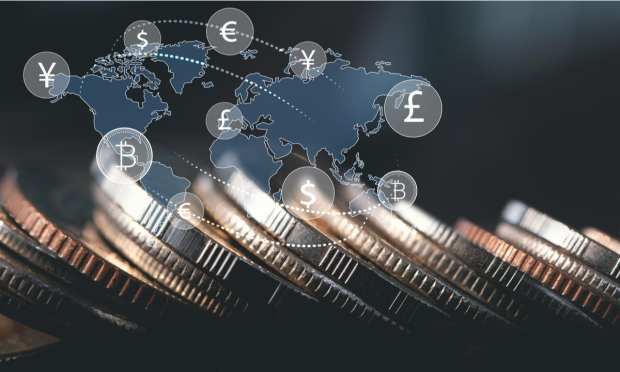Tala and Visa Partnership Seeks To Ignite Stablecoin Use In Emerging Markets

Call it an ignition play for cryptocurrency — specifically, making crypto spendable, not just a store of value — across borders with the unbanked populations of the world, billions of consumers among them, as the match.
In an interview with Karen Webster, Cuy Sheffield, head of Crypto at Visa, and Shivani Siroya, founder and CEO of Tala, said a new partnership between the two firms is aimed at putting stablecoins into digital wallets, onto credit cards — and bringing that digital commerce direct to merchants.
The two companies said Wednesday (May 5) that they are teaming up to help the unbanked gain access to, store, and most importantly, use cryptocurrencies as part of everyday spend.
Tala exists primarily as a lending platform and personal finance app for the underbanked in emerging markets. Siroya said to date, the company has delivered more than $2 billion in credit to more than 6 million customers in countries as far-flung as the Philippines, Kenya and Mexico, and the company recently established presence in India.
The announcement marks one of the first deals since Visa said in March that it is now settling transactions in dollar-denominated stablecoins, specifically Circle’s USDC, the stablecoin governed by the Centre Consortium.
In terms of the mechanics, Tala’s integration with Circle and Stellar will enable Tala’s customers to have access to USDC in the firm’s digital wallet, which in turn can be used in cross-border money transfers and easily exchanged into other digital assets or local fiat.
As Sheffield told Webster, “There’s a lot of potential for digital currencies to extend the value of digital payments and reach consumers in emerging markets.”
Those customers, said Sheffield and Siroya, are likely to embrace cryptos as lower-cost means of sending money across borders, for remittances and in peer-to-peer (P2P) transactions — or to tap working capital as they grow their small or microbusinesses.
Open Loop Ecosystem
Stablecoins can help protect against some of the vagaries of international transactions, including currency fluctuations and foreign exchange (FX) conversion fees.
Stablecoins represent what Sheffield termed an “open loop ecosystem” already supported by dozens of digital wallets. Eventually, those wallets will be interoperable as the crypto ecosystem expands, with Visa serving as a proverbial off-ramp once funds are received.
“When we look at stablecoins like USDC,” said Sheffield, “we really see them as just another form factor for dollars.”
The operating efficiencies should gain attention and a wider embrace in emerging economies among individuals and enterprises alike, he said.
But to get there, payments networks (Visa among them) need to partner with businesses that have developed deep expertise in those regions, he said.
As to what each side gets from broadening the digital currency ecosystem, Siroya said spendable crypto represents an efficient and equitable financial tool for people currently excluded from traditional financial services.
And for Visa, said Sheffield, the partnership illustrates and will further Visa’s strategy for popularizing spendable crypto, aided by in-place partnerships with Circle and Stellar Development Foundation.
Circle has estimated that USDC has more than $13 billion in circulation, up more than 1,000 percent year over year.
The cross-border remittance ecosystem that is taking shape over the Stellar network, said Siroya, spotlights how technology and infrastructure have changed through the seven years since the FinTech’s founding. The convergence of rails, wallets and cryptos can deliver a broad range of digital-first financial solutions to populations that have traditionally lacked access to traditional banking and payment activities.
Tala, she said, has been actively moving beyond credit products (powered by advanced technologies and alternative data sources) toward wallet and account offerings in an effort to give consumers the ways and means to store and access money and improve their own financial wellness. Siroya likened the effect of combining credit, accounts and spending power to enablement services tailored to each individual.
Those 6 million customers are primed to port their wallet activities to crypto transactions, inching into familiarity with stablecoins as they still can choose to convert balances into fiat. There are already signs of willingness to make the crypto pivot, as Siroya said — where, in the Philippines, for example, Tala customers are embracing crypto in other settings.
Sheffield said that thus far, the efforts with Tala are in the development stage, as Visa is helping Tala build out the tech solution and get cards connected to USDC balances. It might be a while before local merchants in Tala’s markets have the ability to directly accept USDC.
“We don’t think consumers should have to wait for that,” said Sheffield. “They should have a really easy way where, the moment they receive a remittance, they can walk across the street and they ‘tap to pay,’ with a Tala Visa card to get access to that balance that they just received from a family member halfway across the world.”
